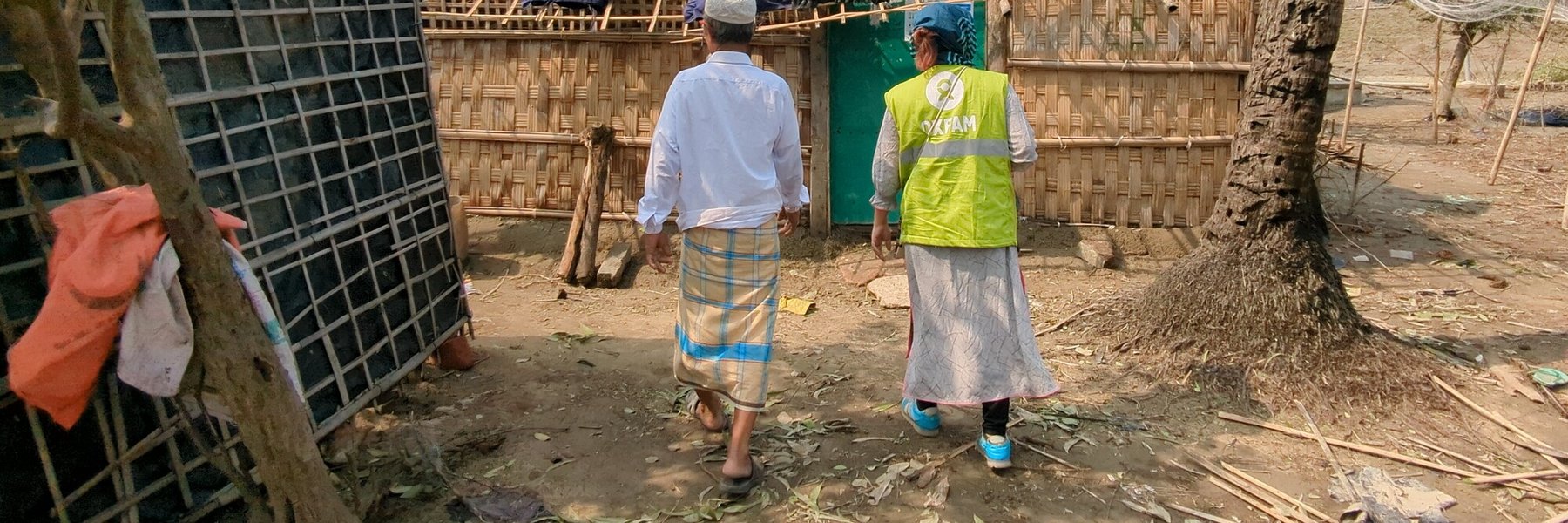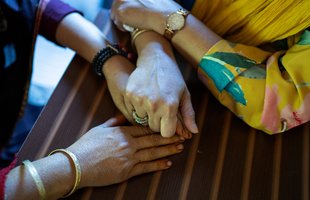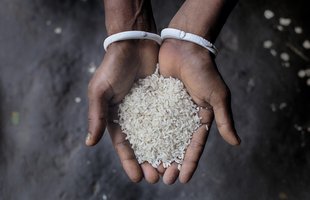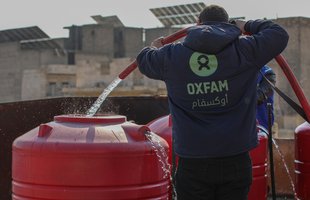Oxfam's emergency response team assessing needs and providing critical aid support after Cyclone Mocha's destructive path. Image: Oxfam

Oxfam and partners are responding
Cyclone Mocha
People were killed and infrastructure extensively destroyed when Cyclone Mocha hit western Myanmar on Sunday (14 May). Thousands of people are now displaced within the country.
Oxfam teams are assessing the situation there and in Bangladesh.
How Oxfam works in emergencies
-

Community led response
We work in partnership with local organisations. For example, in countries bordering Ukraine, our partners are providing essential items like food parcels, blankets, menstrual products, toothbrushes and nappies.
-

Providing food to people in extreme weather events
Our teams provide emergency food packages to people after extreme weather events like cyclones. These include items like cooking oil and rice.
-

Supplying clean water
Oxfam and partners provide clean water and sanitation fast, helping prevent deadly diseases spreading.
How is Oxfam responding to Cyclone Mocha?
Thousands of people are displaced within Myanmar in camps in Rakhine state.
Myanmar and Bangladesh are prone to natural disasters. Cyclone Mocha is the first to form in the Bay of Bengal this year and one of the most powerful cyclones to hit in years. Mocha made landfall in Myanmar on Sunday bringing heavy rains and winds hitting both Myanmar and Bangladesh.
Oxfam and partners are assessing the devastation caused by Cyclone Mocha in Rakhine State in Myanmar. And are already responding in Cox’s Bazar in Bangladesh, where around 1 million Rohingya refugees live.
Oxfam plans to mount a humanitarian response to provide clean water, sanitation and hygiene facilities, as well as emergency cash and food.
Oxfam's Emergency Fund
Make a donation today and help us respond around the world, around the clock.